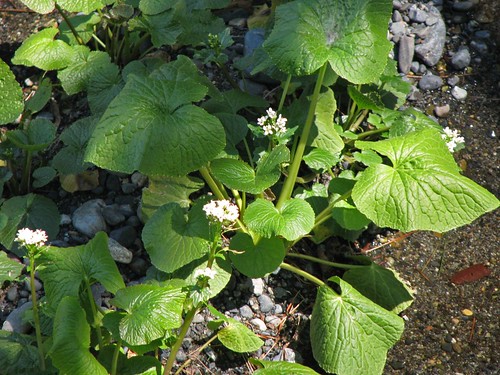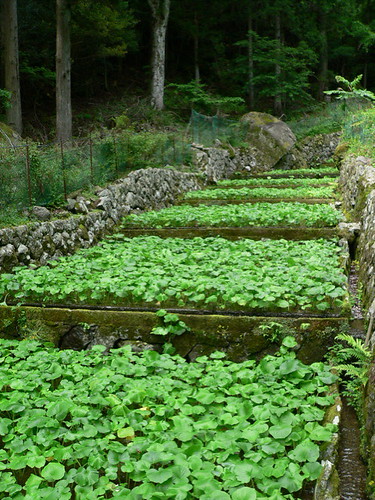Ever since I started to grow my little garden in Japan I have been wanting to get some gardening books from here. I always kept from buying them by making excuses like not having money or not knowing the language, but I finally let myself be and got two. I bought one about container vegetables and one about fruits.
I figured I really needed to get some reference books because I was struggling a little with the vegetables seasons and dates to sow. I am used to live in a very warm weather where things grow year round, but here I have to take into account a very marked winter and the cold days. Having some reference dates from the books really makes my life much easier. I also wanted to have the books because there are many vegetables here (bekkana, komatsuna, etc.) for which the information in English is a bit hard to come by.
It took me a lot of time and comparing to pick them, but I am very happy with the ones I got. They are very detailed and clear, they also have a lot of drawings explaining everything, which is crucial to me because I am still learning Japanese.
I think it is interesting to see how here in Japan they have a lot of gardening books specialized on container gardening. I guess they are many people like me, who lives in the city and doesn't have space for big gardens, just a small balcony to grow. It is also nice seeing how gardening is a very common hobby, they are many different authors and publishers, and I see new gardening books coming out every year.
I really like these gardening books, they have nice drawings and a different approach to what I am used, so they feel fresh and special. They also have a lot of regional tips which I can use, and some ideas I haven't seen in western books; I think I will learn a lot from them. With those new insights and the western knowledge I got I think I will be able to expand my gardening skills and grow a very successful balcony garden.
Keep posted, I will write about the new things I learn and how they turned out.
I figured I really needed to get some reference books because I was struggling a little with the vegetables seasons and dates to sow. I am used to live in a very warm weather where things grow year round, but here I have to take into account a very marked winter and the cold days. Having some reference dates from the books really makes my life much easier. I also wanted to have the books because there are many vegetables here (bekkana, komatsuna, etc.) for which the information in English is a bit hard to come by.
It took me a lot of time and comparing to pick them, but I am very happy with the ones I got. They are very detailed and clear, they also have a lot of drawings explaining everything, which is crucial to me because I am still learning Japanese.
I think it is interesting to see how here in Japan they have a lot of gardening books specialized on container gardening. I guess they are many people like me, who lives in the city and doesn't have space for big gardens, just a small balcony to grow. It is also nice seeing how gardening is a very common hobby, they are many different authors and publishers, and I see new gardening books coming out every year.
I really like these gardening books, they have nice drawings and a different approach to what I am used, so they feel fresh and special. They also have a lot of regional tips which I can use, and some ideas I haven't seen in western books; I think I will learn a lot from them. With those new insights and the western knowledge I got I think I will be able to expand my gardening skills and grow a very successful balcony garden.
Keep posted, I will write about the new things I learn and how they turned out.




















































